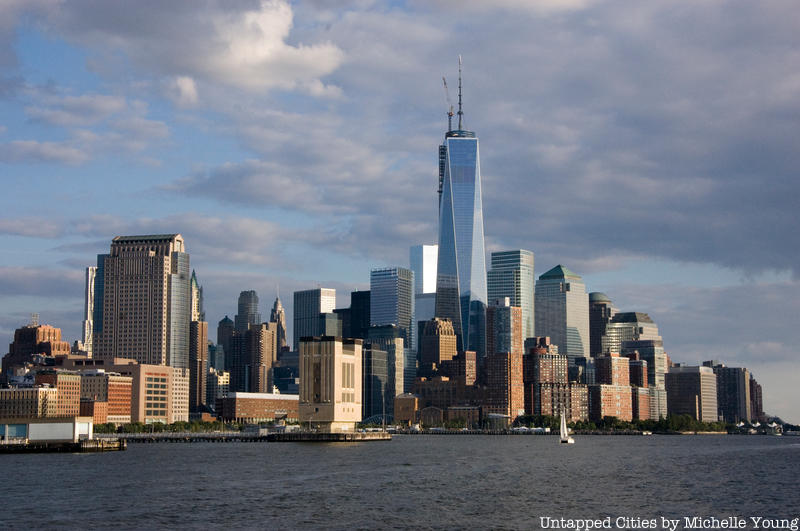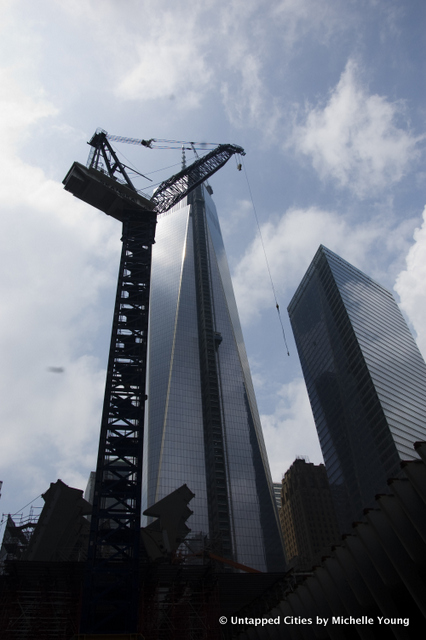
It seems Fashion Week attendees are not the only ones with some extra height this week. According to a report by Council on Tall Buildings and Urban Habitat (discovered via Atlantic Cities), many of the tallest buildings in the world are topped with ‘vanity height’ or extra floors that increase their stature but are uninhabitable.
Of the 74 structures around the world that are currently classified as supertall, meaning they surpass 300 meters, 44 of them would not pass the mark without their vanity height. According to the Atlantic Cities, “New York City has two of the top 10 tallest vanity heights in the world and the city will gain a third when the new One World Trade Center opens in 2014.” [Update November 12, 2013: 1 WTC is named by the Council on Tall Buildings to be the tallest building on the United States, beating Chicago’s Willis Tower, as its needle is deemed a spire and not an antenna, which is considered non structural).]
 1 WTC under construction
1 WTC under construction
The following chart compares the ten buildings whose vanity heights take up the greatest percentage of their stature.
Adding extra, unusable height to gain buildings prominence is nothing new. In 1930 the builders of the Chrysler Building infamously added a 120 foot spire to the structure at the last minute in order to outstrip 40 Wall Street as the tallest building in the world.
Check out our previous article on the world’s tallest buildings in New York City.





